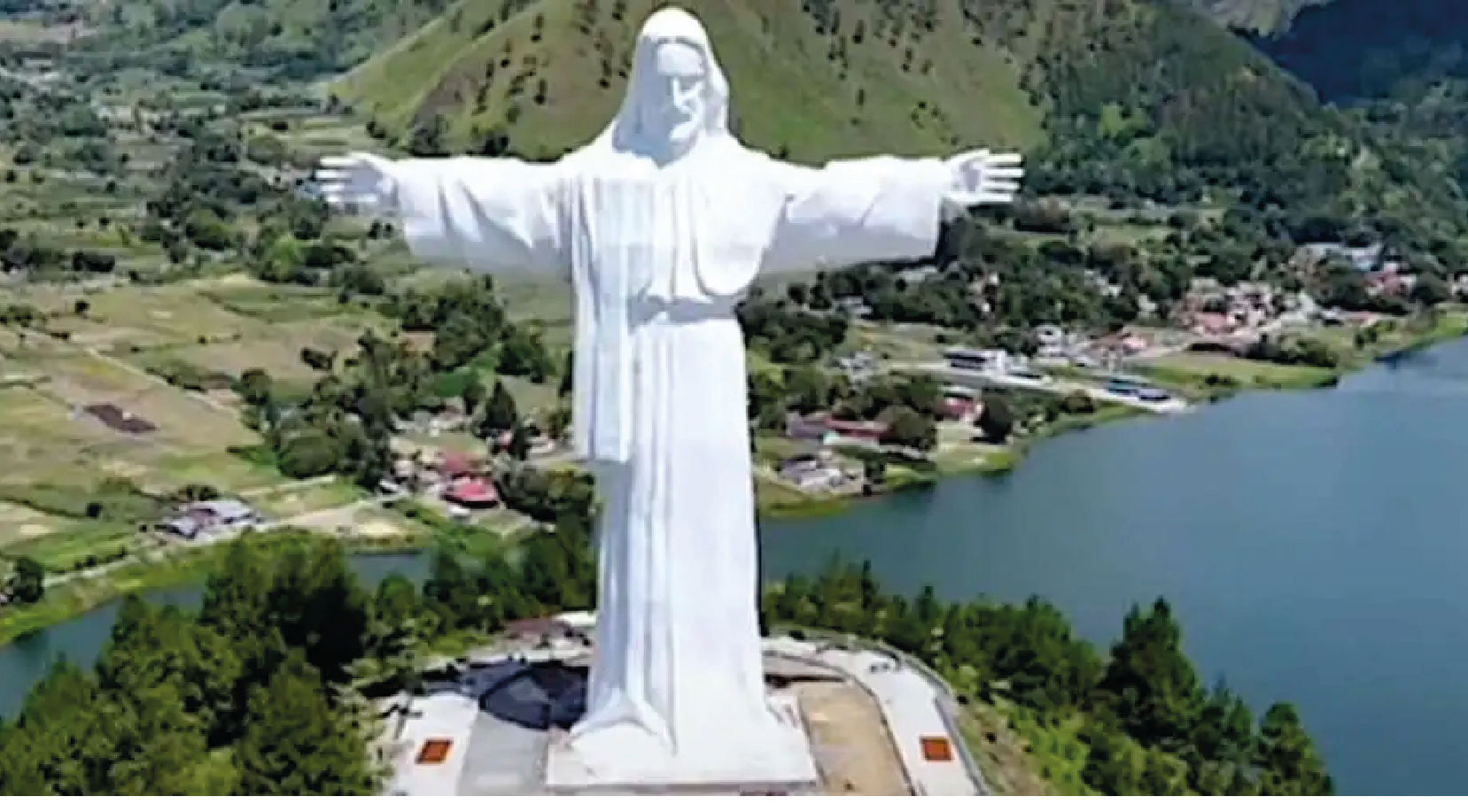(ZENIT News / Sumatra, 09.23.2024).- In a stunning display of faith and craftsmanship, Indonesia has unveiled the world’s tallest statue of Jesus Christ, rising majestically above Sibeabea Hill in North Sumatra. Towering at 61 meters, the “Jesus Christ the Savior” statue now stands as a new global landmark, surpassing Rio de Janeiro’s famous “Christ the Redeemer” by over 20 meters. This monumental structure overlooks the scenic Toba Lake in Samosir Regency, blending natural beauty with spiritual significance.
The statue was officially inaugurated on September 19 by Bishop Antonius Subianto Bunjamin, President of the Indonesian Bishops’ Conference, in a ceremony that drew both local and international attention. Just weeks before, on September 6, Pope Francis himself blessed a miniature version of the statue during a special event at the Vatican embassy in Jakarta. The Pope also signed a prayer plate that now sits at the base of the towering statue, echoing his words: “What is admired about Jesus the Savior is his infinite love.”
The unveiling of this statue is more than a ceremonial act—it is a testament to Indonesia’s commitment to interfaith harmony, despite being a predominantly Muslim nation. In this spirit, the statue serves as a symbol of inclusivity and a beacon for all who seek solace and spiritual reflection. Bishop Bunjamin remarked during the inauguration, “This is a hill blessed by God, expected to be a place where people’s faith can grow stronger.”
Located in an area of Indonesia with a significant Christian population, North Sumatra is home to more than a million Catholics and over four million Protestants, according to the Central Statistics Agency. The statue thus holds deep meaning for the region’s Christian community, who now have a monumental representation of their faith that also draws thousands of tourists and pilgrims each year.
Capuchin Archbishop Kornelius Sipayung of Medan emphasized the deeper meaning of the statue, calling it more than just a visual marvel. “This statue is a reminder that God has been present in the world,” he said. “It’s a call for humans to be a light to the world.” The open arms of Jesus, a central feature of the statue, symbolize Christ’s boundless acceptance and love for all people, regardless of background or belief.
Standing on Sibeabea Hill, the statue has transformed the landscape into a destination not only for tourists but for believers seeking spiritual renewal. The hill itself, which Bishop Bunjamin called “blessed by God,” is expected to become a pilgrimage site, where visitors can reconnect with their faith while taking in the breathtaking surroundings of Toba Lake, one of Indonesia’s natural wonders.
The statue’s construction comes at a time when Indonesia, a Muslim-majority nation, is often cited as a model of religious tolerance. The inauguration of “Jesus Christ the Savior” underscores this message, celebrating the country’s diversity while highlighting the strong Christian presence in North Sumatra. As the tallest statue of Jesus in the world, it has already become a landmark of faith and a symbol of hope for many.
Thank you for reading our content. If you would like to receive ZENIT’s daily e-mail news, you can subscribe for free through this link.



